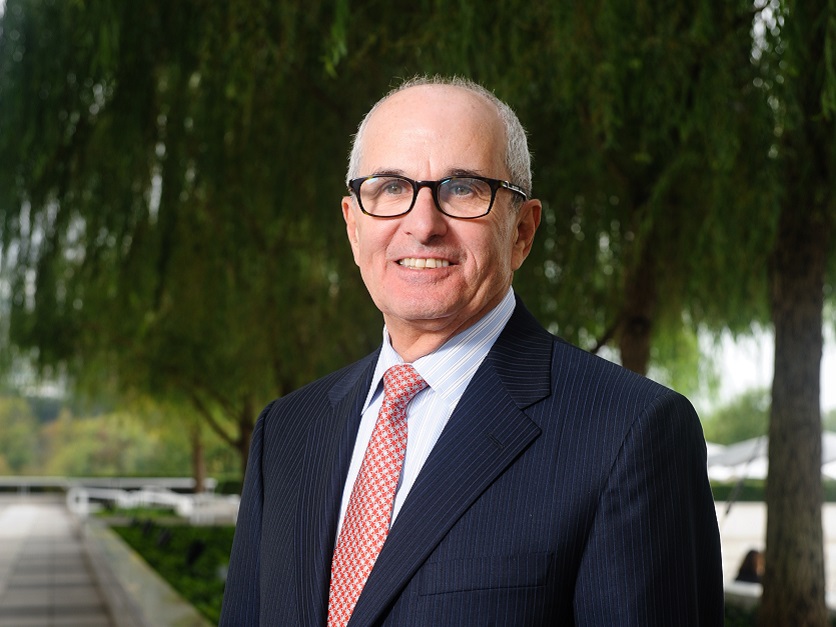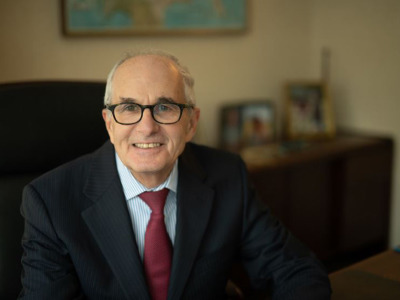The lead editorial in the Easter Sunday edition of the Washington Post declared “Famine Looms in Africa.” 100 percent true. Twenty million people are on the verge of starvation. Yet, as the Post notes “This remarkable emergency is attracting remarkably little attention.” Why?
We were all horrified recently to see children gassed to death in Syria. Republicans and Democrats had the same reaction, as did the world (except for Russia). There was broad support for President Trump’s military response to make clear this behavior was just not acceptable.
Why is famine different? Famine is no longer inevitable; it can be prevented or greatly mitigated at the very least. (It is hard to deal with a government that stands in the way of delivering food aid.) The solution is two-fold.
First, as discussed in my column last month, the United States and the rest of the world must make good on their pledges to the World Food Program (WFP). There is a bipartisan recognition in Congress that eliminating hunger fights terrorism and fosters economic development. I am hopeful- based on comments by Ambassador Nikki Haley, former South Carolina Governor David Beasley who is the new Executive Director of WFP, and key Members of Congress - that the Congress will continue to support foreign aid.
Second, we - in this country and around the world - must follow sound science and boost production. This is not just a code word for biotechnology, although biotechnology has a role to play. It means prioritizing agriculture production around the globe. It means helping people feed themselves.
There are reasons for both optimism and frustration. In 2012, the world’s economic leaders pledged to ramp up agriculture production and launch a New Alliance for Food Security and Nutrition. The African Union has asked all 54 African countries to devote at least 10 percent of their budgets to agriculture. USDA has signed a Memorandum of Understanding (MOU) with the Alliance for a Green Revolution in Africa (AGRA) agreeing to expand production by smallholder farmers by working with them on research and training. The Agency for International Development, Bureau of Food Security, supports country-driven strategies that underpin growth in agriculture production.
When Dr. Norman Borlaug, the father of the Green Revolution, passed away in 2009, his dream was to extend the Green Revolution to Africa. Africa has the most unused and underutilized agriculture land in the world. Their crop yields are only 10 percent of ours in the United States. The yields can be increased significantly in a single year if certified hybrid seeds and inputs can reach farmers, along with education on better agricultural practices. Long term, yields can be further increased by converting hoes to tractors, expanding irrigation and using other modern technology.
Every religion implores us to feed the hungry, but global food security does not seem to motivate enough Americans or others in the “developed” world. I have trouble understanding this, but it seems to be true. There is more interest in cage free eggs and other nutritional fads than in saving 20 million lives.
Why is there no outrage?
In part it is because we have become so efficient in the production of food that most of us know little about agriculture. We are so comfortable in our own food security that we can no longer envision death caused by starvation. We are spoiled by low prices and think of hunger as skipping a meal.
Many consumers just don’t feel that they have a stake in what it takes to produce the bounty we enjoy. There is a fight every year in Congress to fully fund agriculture research, conservation and rural development. These programs don’t only impact the big square fly-over states in the middle of the country. Agriculture research is critical to expanding production while keeping prices low for all of us.
Personal belief systems also stand in the way of fully applying modern science to agriculture. Here I am referring to biotechnology. Biotechnology can actually reduce the use of pesticides, help the environment and lower the cost of food. It is not a magic bullet but it can sure help feed a world of 9-10 billion people. Yet much of the public has a negative view of biotechnology when it comes to food and does not seem reassured by the National Academy of Sciences’ conclusion that today’s foods produced with biotechnology are safe. We trust the advice of our medical doctors but not the advice of agricultural scientists.
Europe is part of the problem, too. They use rules against biotechnology as a trade barrier and then apply mega-doses of fertilizers to their crops. They discourage farmers in less developed countries from using the very technologies that could benefit them the most in the fight against hunger. In short, the politics of biotechnology are a major barrier to global food security.
One would think that the power of pictures showing starving children would be enough to motivate the global community, but it is not. Perhaps people just feel helpless given the magnitude of the challenge. The thought is that there have been famines throughout history and there always will be. The famines are caused by wars within the countries. “There is nothing we can do” is the belief. But that resignation, that abdication, so dangerous and toxic is no longer acceptable.
In Syria we were able to send a message with our rockets. We can send a message that famine is not acceptable by:
- Fully funding our food aid programs and reporting on their benefits;
- Establishing federal policies based on science, not social media;
- Supporting agriculture programs at AID, Bureau of Food Security;
- Implementing the USDA MOU with AGRA;
- Funding agriculture research;
- Keeping famine on the agenda of the G8 and G20; and
- President Trump and his Cabinet addressing the issue, highlighting the link between famine, national security and economic development.
About the author: Marshall Matz specializes in agriculture and food security at OFW Law in Washington, D.C. He was the founding Chairman of the Board of the World Food Program—USA and continues to serve on the board along with the Congressional Hunger Center.


